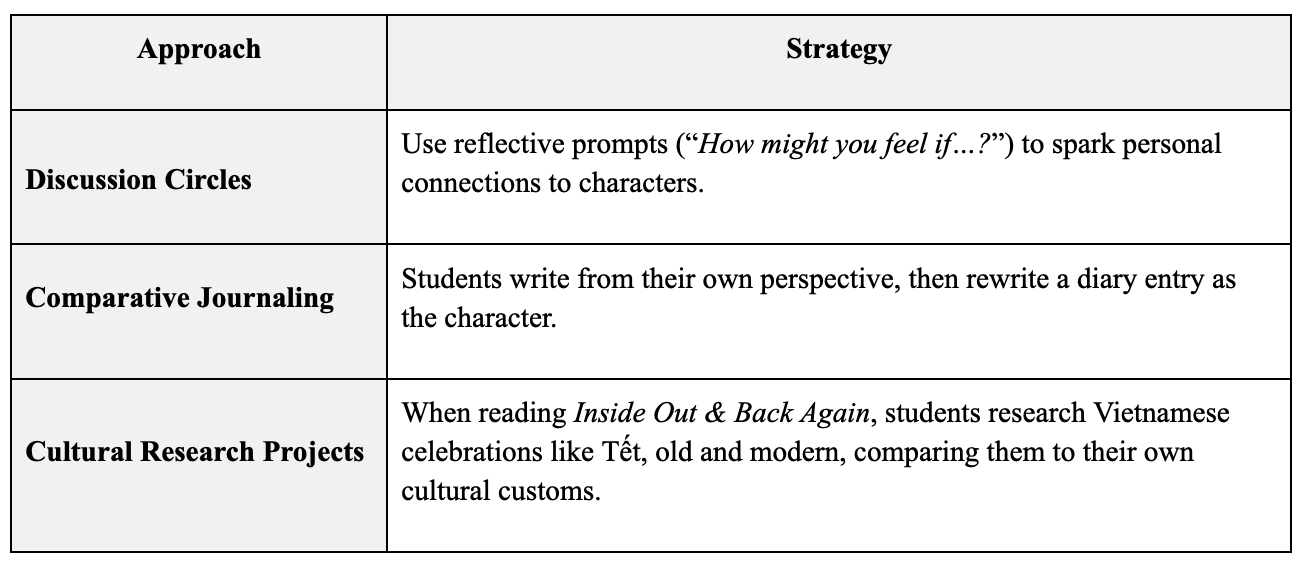The Role of Edufiction in Cultivating Empathy Across Cultures 🌍
Introduction
Empathy—our ability to feel with others—is fundamental in shaping compassionate, global citizens. It makes us human, not only to know that we are emotional beings, but more importantly to know that feeling and expressing emotion defines us as human. To sensitise oneself to the feelings of others is the very definition of empathy. Edufiction, by blending compelling storytelling with rich factual context, offers an immersive gateway for young readers to step beyond their own lives and into the shoes of characters from diverse cultures, experiences, or identities.
1. Why Fiction Opens Doors
Emotional immersion: Research* shows when readers connect emotionally with characters, they’re more likely to internalize others’ experiences.
Narrative transport: As students engage with a story, they suspend disbelief and begin to think and feel from the character’s point of view.
These mechanisms are what make edufiction uniquely powerful.
2. Edufiction in Action: Real Examples
Inside Out & Back Again by Thanhha Lai (2011, HarperCollins)- This novel-in-verse tells the story of Hà, a young Vietnamese refugee navigating life in 1970s Alabama. Through her eyes—we feel the disorientation of a new language, the sting of discrimination, and the power of familial bonds. Students experiencing Hà’s journey often report a newfound understanding of refugee struggles and resilience.
The Only Road by Alexandra Diaz (2016, Simon & Schuster Books for Young Readers) - Featuring René, an Indigenous Guatemalan boy fleeing gang violence, and his cousin Esteban, this novel guides readers through harrowing challenges—treacherous terrain, smugglers, border-crossing—while grounding the narrative in real-world geopolitical forces. Readers gain insight into the complex human motivations behind migration, beyond headlines.
Out of My Mind by Sharon M. Draper (2010, Atheneum Books for Young Readers) - Though fictional, protagonist Melody’s life as a child with cerebral palsy vividly demonstrates daily frustrations and triumphs. Many neurotypical readers report heightened awareness and respect for classmates with disabilities after reading her story.
3. How Educators Can Integrate Edufiction
4. Empathy in Action: Outcomes That Matter
Social–Emotional Growth: Students exhibit greater sensitivity in cross-cultural peer interactions.
Cognitive Empathy: Understanding why a character acts in a certain way boosts perspective-taking.
Real-World Awareness: By linking narrative to facts—like refugee resettlement statistics—students understand broader contexts behind individual stories.
5. Tips for Educators & Parents
Choose diverse voices: Prioritize books by authors from the cultures you wish students to learn about.
Normalise emotional responses: Encourage reflection—“Which part made you feel sad? Angry? Hopeful?”
Connect fiction to facts: Tie narrative to non‑fictional background—videos, news, expert interviews—to reinforce learning.
Conclusion
Edufiction isn’t just a genre—it’s an invitation. It invites students to walk miles in another’s shoes, across time and borders. By crafting narratives that marry story with substance, educators empower young minds to grow—not just academically, but humanely. In today’s global society, empathy isn’t optional. Thanks to edufiction, it’s never been more attainable.
Let’s continue this conversation at ThoughtBytes
Which story opened your mind to someone else’s experience? Share in the comments!
*Sources
Green, M.C., & Brock, T.C. (2000). The role of transportation in the persuasiveness of public narratives. Journal of Personality and Social Psychology, 79(5), 701–721.
Kidd, D.C., & Castano, E. (2013). Reading literary fiction improves theory of mind. Science, 342(6156), 377–380.
Oatley, K. (2016). Fiction: Simulation of social worlds. Trends in Cognitive Sciences, 20(8), 618–628.


